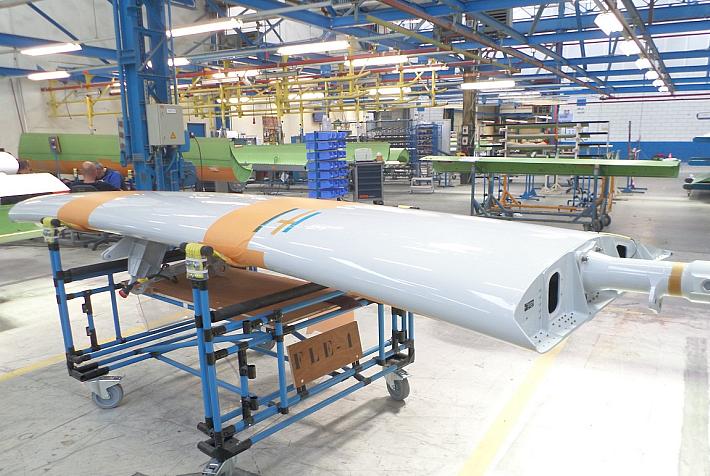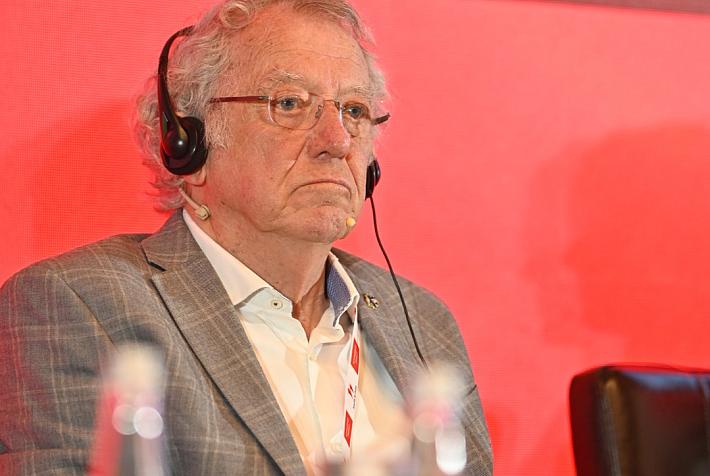Bucharest Centennial: Barbu Ștefănescu Delavrancea, the writer who modernized the capital

Romania-Insider.com has started a series of articles about Bucharest landmarks of architecture or history, which have witnessed the last century of what is now the Romanian capital, and noteworthy people who have helped build the Romanian capital as it is today. This project is supported by the Bucharest City Hall through the Public Monuments and Touristic Heritage Administration (AMPT), within the cultural program Bucharest-Centennial.
Barbu Ștefănescu Delavrancea is known to a wide, local public with his literary work but his career developed largely in the public sphere. Delavrancea, who was also a lawyer, was actively involved in the political life and held several public office positions, among them that of mayor of Bucharest. From this post, he started or continued several projects to develop or modernized the city at the turn of the century. The writer was also an active supporter of the Great Union.
His eloquence, known and applied to important cases of the time, is visible in several speeches that deal with the topic of the shared identity of the Romanian provinces and of the need of the union, which will take shape a few months after Delavrancea’s death, in December 1918. Among these are: “The National Issue – The Role and Rights of the Romanians in Transylvania” (1893); “The Light of All” (1895); “Country and Patriotism” (1915); “Land and Rights” (1917). Delavrancea was also active within the League for the Cultural Unity of Romanians, which supported the independence and the union.
His public interventions also show his pro-Entente and pro-France position, stated on several occasions. When the country entered the First World War, Delavrancea, also a member of the Romanian Academy, held a speech supporting the union of the Romanian territories. The speech mentioned the shared linguistic identity and argued in favor of the union. Romania celebrates this year a century since the Great Union of 1918.
One of the notable cases in which lawyer Delavrancea was involved was that of defending playwright I. L. Caragiale. Publicist Al. Ionescu-Caion had accused Caragiale of plagiarizing the work of a Hungarian writer in his drama The Blight (Năpasta). The case was settled in favor of Caragiale.
During his mandate as mayor of the capital, Delavrancea took a series of measures that changed the way the city looked, from the public transport infrastructure and lighting to various urban improvements.
He enforced the law of the Sunday rest in the capital. The law had been proposed by then prime minister Vasile Lascăr and adopted in 1897. It entailed the granting of a half-day off, Sunday morning, and declared 14 holidays a year.
At the same time, Delavrancea supported the expansion of electric trams to replace the horse-driven ones. The first electric tram line started working in the capital in December 1894, on the Cotroceni-Obor line, after mayor Pache Protopopescu granted a concession for building tram lines. His proposal was met with opposition but Delavrancea insisted, underlining the need for electric trams, which would do away with several unaesthetic aspects associated with horse-driven trams, like the wire nets on the city’s boulevards.
Delavrancea also proposed to engineer Dimitrie Leonida to take charge of a project to modernize the Grozăvești plant, which in 1902 started producing energy for the Bragadiru water pumps and for public lighting. The upgrade took place between 1910 and 1912 and included the installation of new turbines.
Mayor Delavrancea looked at the capital’s water filtration system as well. Between 1899 and 1901, works were carried out to collect the underground waters in the Bragadiru. The construction of the Bragadiru station increased the quality and availability of drinkable water in the capital. Works to deepen the Dâmbovița river, on the Grozăvești – Ciurel segment, were undertaken, and the river banks were repaired.
The mayor also took care of the city’s street infrastructure. Alignment works were undertaken on 120 streets during his mandate. Calea Victoriei, Dudești, Calea Rahovei were among the upgraded arteries. The Coșbuc boulevard was extended, the Pantelimon street was created and the works on Filaret Park were started. One of the least clean neighborhoods of the time, Tei, was cleared up and paved, and sewers were built.
A compulsory subscription for garbage removal was among the other measures he introduced. In the areas of education and culture, Barbu Ștefănescu Delavrancea supported the establishment of a trade school and the printing of a volume on the history of Bucharest.
After serving as mayor of Bucharest, between 1899 and 1901, Delavrancea was a minister of public works (1910 - 1912), a minister of industry and commerce (beginning with 1917), and a member of parliament.
But the writer Delavrancea is far better known to the wide public for his novellas and stories, including the famous Hagi Tudose, for a series of tales, like Neghiniță, and for the dramatic Moldova Trilogy, which starts with the play Apus de Soare (Sunset).
Photo source: AMPT. Pictured, the statue of Barbu Stefanescu Delavrancea located in Park Kiseleff in Bucharest.
















